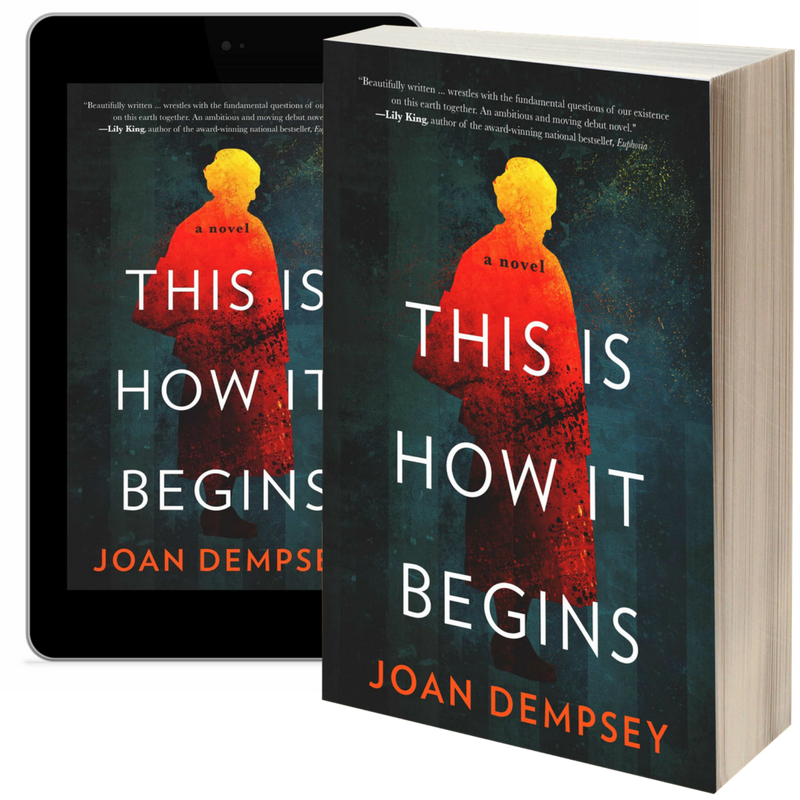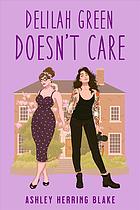Dempsey, Joan. This Is How It Begins: A Novel. Berkeley, CA: She Writes Press, 2017. 399 p. Paperback $16.95. ISBN 978-1-63152-308-3.
 This is a very complex novel, well done, but complicated and at times difficult to follow. It is really two very different novels meshed into one. One is the story of Holocaust survivors who eventually escape to Massachusetts and make new lives for themselves. One becomes, eventually, the attorney general of Massachusetts. His wife, already an artist during the Holocaust, had rescued her Jewish husband to be from the Warsaw Ghetto and gained a career as professor of art history. She also harbors a great work of art which she saved from the Nazis. Their son becomes a politician, a state senator and eventually the president of the Senate. He and his wife have a gay son, a school teacher, married to a lawyer. There is very little about their life together, but his firing because he is gay forms the background for the other novel, a fight against a mega-homophobic evangelical church which is trying to change the laws of Massachusetts to keep gay folks out of the schools.
This is a very complex novel, well done, but complicated and at times difficult to follow. It is really two very different novels meshed into one. One is the story of Holocaust survivors who eventually escape to Massachusetts and make new lives for themselves. One becomes, eventually, the attorney general of Massachusetts. His wife, already an artist during the Holocaust, had rescued her Jewish husband to be from the Warsaw Ghetto and gained a career as professor of art history. She also harbors a great work of art which she saved from the Nazis. Their son becomes a politician, a state senator and eventually the president of the Senate. He and his wife have a gay son, a school teacher, married to a lawyer. There is very little about their life together, but his firing because he is gay forms the background for the other novel, a fight against a mega-homophobic evangelical church which is trying to change the laws of Massachusetts to keep gay folks out of the schools.
In the middle of this, the elder couple, the Holocaust survivors, are invited to Poland to celebrate the discovery of some of the wife’s art from the Holocaust. One criticism of this section is that the abundance of Polish in the novel (names, places, phrases) is not always easy for the non-Polish reader to follow.
The novel ends with a hearing at the state capital for one of the proposed homophobic laws sponsored by that evangelical church, with lots of testimony. The climax is the testimony of the Holocaust survivor wife, though subsequent events are left unresolved. We just have to assume that civilization prevailed and that their gay grandson got his teaching job back. I hope so!
The author is a good writer despite all the complications of her ambitious novel. The main characters, including the Holocaust survivors, their son, the senate president and also the leaders of the homophobic evangelical church are all well and convincingly drawn. The gay son of the Senate president and his wife and his gay spouse are minor characters, although the firing of their son from his teaching post inspires a major part of the battle for civil justice in the novel. The dialogue is heavy though at times not easy to follow.
This is a worthy novel for folks who are interested in the politics of holding back homophobic bigots, and also for fans of art and its plight during the holocaust, in addition to its victims and survivors.
This is not a gay story per se, but rather an exceedingly complex mixture of efforts to prevent homophobic laws being passed and also a look back to the effects of the Holocaust, especially on the art world. Libraries and readers interested in any of these themes will wants to check out this worthy novel. The novel concludes with a reader’s guide with questions for discussion and “Books I Found Helpful” on art, on the Christian culture wars, on human nature, and on Warsaw during WWII.
James Doig Anderson, Professor Emeritus,
Rutgers University Department of Library & Information Science.
